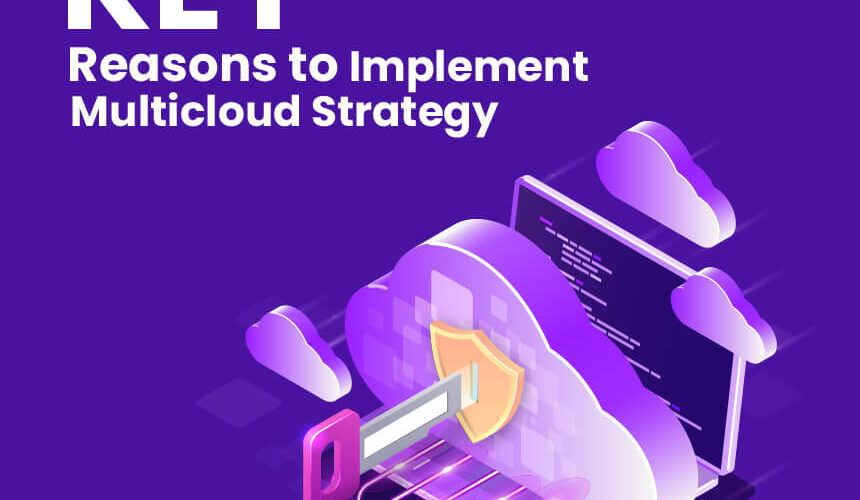Multicloud strategy refers to using more than one cloud computing service provided by various vendors. The environment could be either private, public or both. The major advantage of implementing a multi-cloud strategy is that the computing resources are distributed to reduce data loss and minimize the chances of downtime. Also, the storage space and the computing power are enhanced.
The current cloud technology is advancing from private clouds to public clouds and more advanced with both.
Reasons to choose multi-cloud strategy:
Enterprises have the reason to choose multi-cloud as each of the chosen cloud technologies has its distinct ability to accomplish tasks. For instance, one technology may be good at transferring huge amounts of data with the other could have modern and intelligent technologies integrated into them. Here are some of the key reasons why organizations choose multi-cloud strategy:
l Flexible: Multi-cloud environments have the greater ability to be flexible. Moreover, on a global scale, what lies prominently is that enterprises can host their applications on any device anytime and on the desired cloud. Moreover, each of the cloud technology’s capabilities can be optimized.
l Avoid proprietary lock-in: Any organization opting for a single cloud service would not be free enough to do business with the other cloud service providers. Instead, they are locked into work with only that particular cloud service provider. It would be a tedious job for the organizations to move their services on to the multi-cloud once a single cloud service is chosen. Such migration would consume time, cost high and also includes technical challenges.
l Avoid downtime: Using a multi-cloud environment always ensure to reduce downtime, which could be caused either due to human error or a disaster. Using multi-cloud services through different vendors prevents applications to experience a single point of failure. Though cloud service providers offer 99.9 SLA availability, it is significant to note that enterprises choose multi-cloud architecture to build the downtime.
l Achieve goals: Their role is active to help organizations attain their goals, manage risks and fulfilling the compliance standards.
l Return on Investment prospers: As we saw how multi cloud technology helps overcome vendor lock-in. At the same time, it is also very influential in beating the price challenges. Organizations are wide open to the various options that come across and need not compromise on anything. The resulting advantage of multi-cloud is that things turn more agile flexible to enhance the return on investment.
Future is built with Multicloud:
Multicloud services are reliable, scalable and flexible. Apart from the advantages discussed above, enterprises believe that greater challenges will be met with the use of the multi-cloud. Some of them include application migration, security, cost management and solutions across multi-cloud.
The prominent cloud platforms, including Amazon web services, VMware, Microsoft Azure, IBM Cloud and Google Cloud Platform, provide investments to avail compelling infrastructure. And each of these cloud services is unique of their kind to generate several benefits. Their services will render their services in the future, enabling enterprises to adopt cloud computing quickly.
The above points discussed prove that the future is multi-cloud. And this indirectly means that more enterprises will come forward to adopt multi-cloud architecture and provide the best possible solutions.
Conclusion:
The advantages derived by the cloud are outstanding as things happen quickly and easily. Especially when dealing with finance, ONPASSIVE, an AI-driven organization, has the smart product to give the best advantage. O-Counting acts as a perfect tool to deal with your financial transactions anywhere, anytime.
Do you wish to automate the accounting process and simplify your inventory management? Leverage the AI tool for best results.
Source link




